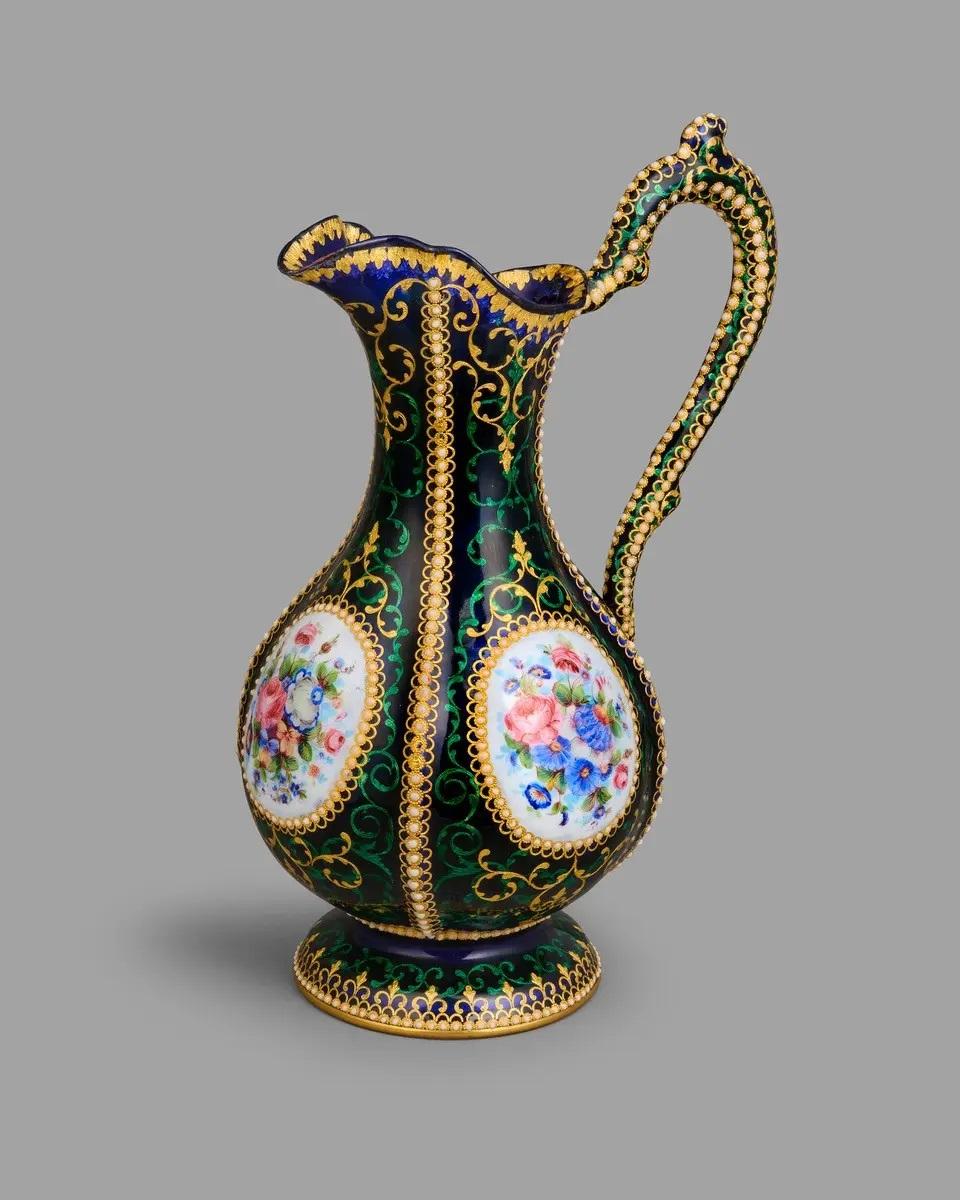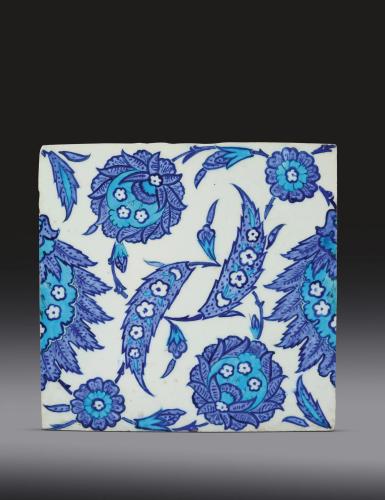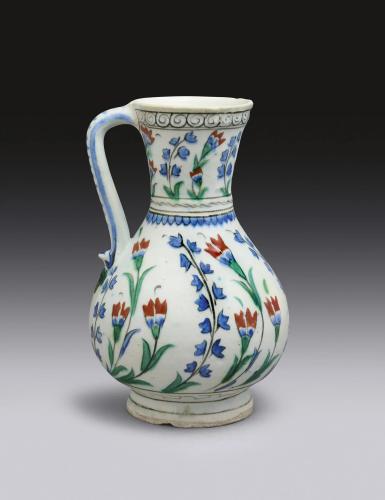

Price on application
This object is eligible for a Certificate of BADA Provenance
The BADA Standard
- Since 1918, BADA has been the leading association for the antiques and fine art trade
- Members are elected for their knowledge, integrity and quality of stock
- Our clients are protected by BADA’s code of conduct
- Our dealers’ membership is reviewed and renewed annually
- Bada.org is a non-profit site: clients deal directly with members and they pay no hidden fees
Exquisite Ottoman Silver-Gilt, Gold and Enamelled Asurelik.
Ottoman Empire.
Early 19th Century.
Height: 27.6cm.
With bulbous body, the surface with a dark blue enamel layer worked with green enamel and gold arabesques, with medallions featuring painted floral bouquets, gold borders set with pearl-like white enamel dots, elaborately carved handle decorated en-suite.
The present asurelik is a rare and extremely fine example of Ottoman manufactured enamelwork of the early nineteenth century, indicating the European influence on Ottoman taste. The origin of late Ottoman enamels is unclear, but it is known that many enamelworks were invited from Central and Northern Europe. Glass presents the most analogous art form with which to compare the creation of Ottoman enamelwork pieces, both reflective of the cultural exchange between the Ottoman Empire and its neighbours.
The fabrication of enamel consists of crushing glass and applying it to the surface using a binder. The glass is then once again fired so that the crushed glass fuses to the surface by heating the enamel just to the extent of melting to the surface without re-melting it (Annales du 18e congrès de l’association internationale pour l’histoire du verre, pp.469-489). The use of this technique by Ottoman craftsmen led them to produce artefacts which could compete against the European imports made for the Middle Eastern market and even surpass them.
Just as Ottoman glassmakers crafted heavily-adorned, sophisticated and challenging objects such as flower vases, kettles, candlesticks, bowls and sweets containers, created to impress their noble of patrons, similar examples exist in enamel. The Topkapi Palace treasury has ornately decorated enamel objects that resemble the present example. For a very similar ewer (inv. no.1886), dated to the 19th century, please see, The Topkapi Saray Museum: The Treasury, ed. J.M. Rogers, C. Köseoğlu, Thames and Hudson, 1987, entry p. 204, illustration no. 98.
The painted design is associated with the painted porcelains made at the Imperial factory in Istanbul in the mid-19th century. Further comparable enamelled courtly objects in the Topkapi Palace treasury include: a dessert service which includes a tray, two covered cups, a pot and three spoons (inv. no.7600), a rose-water flask (inv. no.3501), and a writing set (inv. nos.2/769/778). See, ibid., entries pp. 203, 205, illustrations nos. 96, 97 and 113. For further examples see Istanbul: The City and the Sultan, exhibition catalogue, De Nieuwe Kerk, Amsterdam, 2006, p.108, no.136. and p.128, no. 183.
The BADA Standard
- Since 1918, BADA has been the leading association for the antiques and fine art trade
- Members are elected for their knowledge, integrity and quality of stock
- Our clients are protected by BADA’s code of conduct
- Our dealers’ membership is reviewed and renewed annually
- Bada.org is a non-profit site: clients deal directly with members and they pay no hidden fees



